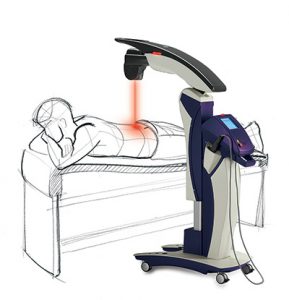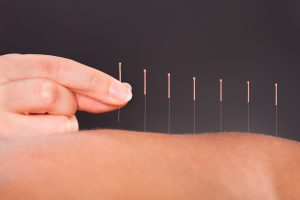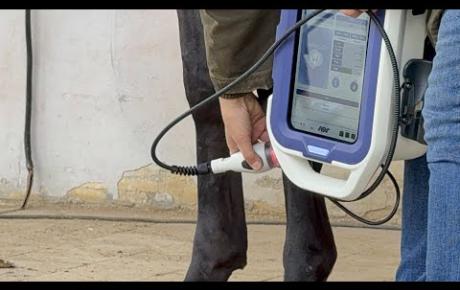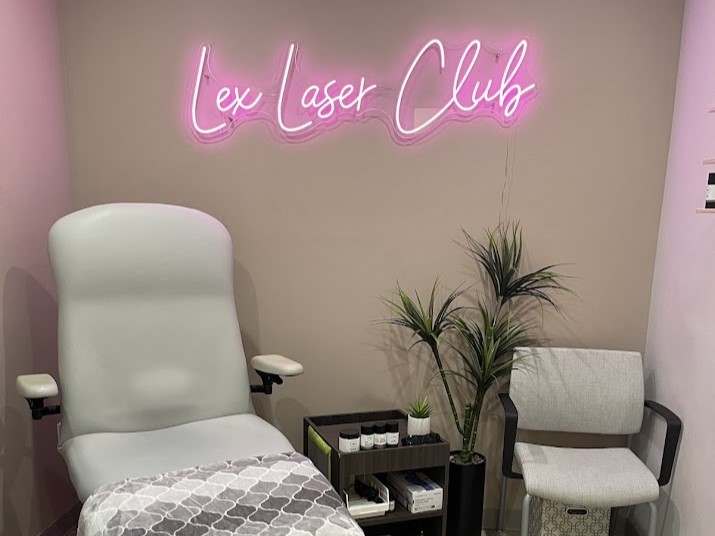As a society, we have to rethink how we traditionally treat pain. Alternative pain treatment methods do exist, and they can be beneficial with or without prescription painkillers.
So, what are some alternative forms of treating pain?
1: Acupuncture
Acupuncture has long been a form of Chinese medicine. In the last century, it has made its way to the Western world as a mainstream form of alternative pain treatment.
People across the United States and Europe use acupuncture to treat lower back pain, headaches, fibromyalgia, and arthritis. As of 2007, 3.1 million people tried acupuncture, and that number is likely much higher today.
How does acupuncture work?
Acupuncture works by stimulating points of the body believed to carry the body’s flow of energy. Acupuncturists do so by sticking little thin needles on specific parts of the body. Often times, acupuncturists place these needles on points of the body where the patient feels pain. Other times, acupuncturists place these needles not directly on the area of pain, but on remote areas that still stimulate the flow of energy in other areas.
Placebo Effect & Publication Bias
Still, not enough research can verify the true effectiveness of acupuncture as a viable form of alternative pain treatment. In A Nation in Pain, Foreman points out that there is much “publication bias” (p.258) out there in regards to acupuncture. There’s also the issue of sham acupuncture where self-proclaimed, non-certified acupuncturists use fake needles and perform improper penetration and placement of the needles.
Yet, Foreman describes other clinical trials that showed sham acupuncture is as effective as the real thing. These findings suggest that acupuncture – real or sham – may have a placebo effect to some degree.
“So what does it mean if fake acupuncture is as good as the real thing? Does it mean that any old kind of skin stimulation helps? That it’s the placebo effect doing the magic? … It’s possible, for instance, that acupuncture triggers potentially beneficial changes in blood flow and immune function. But there are other, potentially more interesting, hypotheses as well.” – Foreman (p.260)
The Benefits
While the placebo effect may occur in some patients, there’s more benefit to real acupuncture as a form of alternative medicine. Research into acupuncture is still ongoing.
In 2006, a Massachusetts General Hospital researcher found that carpal tunnel sufferers had abnormal changes occur in their brains (p.262). When subjects underwent acupuncture, it was found that the acupuncture helped to alter their brain patterns back to a more normal pattern.
The same researcher found that chronic pain patients respond more to acupuncture than healthy people and that “acupuncture can change the normal (resting) degree of connectedness among the various brain regions involved with pain.” (p.262)
Foreman goes on to describe a series of clinical trials performed back in 2008. These trials showed that real acupuncture resulted “in less need for supplementary opioids than sham procedures and that patients getting real acupuncture reported significantly less pain.” (p.259)
At the same time, results on the effectiveness of acupuncture vary depending on the type of chronic pain at hand. Nonetheless, most studies show that real acupuncture is more beneficial than sham acupuncture and no acupuncture altogether.
The Bottom Line: Acupuncture can be beneficial as a form of alternative pain treatment. However, its effectiveness varies on an individual, by trial basis.
2: Chiropractic

“Spinal manipulation… is among the most popular – and, historically, one of the most controversial – of complementary medicine approaches.” –Foreman (p.269)
While acupuncture works to stimulate energy points in the body, chiropractic treatment works as a different form of alternative pain treatment that deals with the spine and musculoskeletal system directly.
Those who suffer from chronic pain in the spine, neck, and back have most likely considered – or been told about – chiropractic. In fact, 22 million Americans undergo chiropractic treatment every year, and 7.7 million of them are back pain sufferers.
Chiropractic involves hands-on spinal manipulation that works to realign the spine. Following an injury or traumatic event to the spine, it’s believed that tissue damage constricts the mobility of the joints in the spine. Chiropractic treatment works to manipulate the spine and release the joints’ mobility once again. It’s not only used to relieve joint and spinal pain, but ligament, tissue, and tendon pain, as well.
Benefits versus Risks
Still, Foreman points out that research into chiropractic treatment varies.
Foreman draws on one Australian study conducted in 2005. This study showed that “spinal manipulation actually worked better for back and neck pain than acupuncture or medications such as NSAIDs or acetaminophen.” (p.270) However, additional studies show that chiropractic treatment must be ongoing to maintain its relieving qualities.
Other studies which Foreman draws upon show that chiropractic patients were more likely to perceive pain improvement rather than “clinically meaningful differences.” (p.271) In other cases, not enough evidence could prove spinal manipulation as an “effective intervention for pain management.” (pp.271)
Other studies conducted by Australian and Canadian researchers found that neck pain sufferers were more responsive to chiropractic treatment than other forms of treatment.
However, there are questions surrounding the safety of chiropractic treatment for neck pain. Though the risks are shown to be small, there are health risks and side effects (including stroke and artery dissection) associated with sudden head and neck movements.
The Bottom Line: Overall, chiropractic treatment is generally safe as a form of alternative pain treatment for lower back pain. It can treat neck pain despite there being higher risks involved. In many cases, its effectiveness is short-lived and requires ongoing treatment.
3: Massage
“Like acupuncture, massage therapy is booming in America. It’s now a multibillion-dollar-a-year industry, backed by fair to strong evidence that, in the hands of trained massage therapists, it is reasonably effective for low back pain. For acute pain, unfortunately, there’s no good evidence that massage helps much. But for chronic pain, the kind that lasts for weeks or months, massage works fairly well.”– Foreman (p.263)
It’s no secret that Americans love massage both recreationally or for therapeutic reasons. When it comes to using massage as a form of alternative medicine, however, it proves to be very beneficial.
In A Nation in Pain, Foreman draws on studies from 2003, 2007, and 2010. Each of these trials concludes that massage therapy is beneficial for treating chronic back pain. The 2007 trial finds massage therapy to be as effective as exercise, acupuncture, and relaxation techniques. The 2010 trial finds that when combined with exercise, massage therapy is beneficial for treating lower back pain (p.264).
Additional Benefits
What’s not exactly clear is which types of massage are most beneficial to chronic pain sufferers.
Foreman draws upon a 2011 study conducted by the University of Washington in Seattle and the Group Health Research Institute. The study compares Swedish massage to “structural massage”. Swedish massage is a more traditional form of massage that entails kneading, long strokes, and deep circular motions. “Structural” massage is more focused on correcting soft tissue abnormalities. The study concludes that both these types of massage relieved chronic pain and inflammation.
Still, additional studies show that Swedish massage may have more health benefits than other forms of massage (p.264). A 2010 study conducted by Cedars-Sinai Medical Center in Los Angeles compared blood samples taken before and after healthy test subjects underwent Swedish massages. They compared this group to another group who underwent something known as light touch therapy. They found that those who underwent the Swedish massage had lower levels of a blood pressure regulating hormone. Those who underwent the Swedish massage also had lower levels of cytokines, an inflammatory chemical.
On the other hand, some argue that deep tissue massage is more beneficial than Swedish massage. While Swedish massage works to improve blood and lymph circulation, deep massage aims to improve movement and posture.
It’s not exactly clear which type of massage is most beneficial for treating chronic pain. Regardless, people love massage therapy, whether they suffer from chronic pain or not. It’s effective in alleviating body pain and stress, especially in those who suffer from chronic low back pain. It also has other health benefits, including relief from insomnia, anxiety, and headaches.
4: Exercise & Nutrition

A healthy, balanced diet and an active lifestyle are the hallmarks of good health. But which kinds of foods and exercises should be part of an alternative pain treatment regimen?
Not only does Judy Foreman explore alternative forms of treating chronic pain in A Nation in Pain. She also explores the types of foods and exercises that specifically work to alleviate chronic pain.
Foods & Nutrients for Alternative Pain Treatment
Inflammation is one of the body’s key biological responses that enable our health and survival. When there is a prolonged injury or illness, however, inflammation can wreak havoc on our bodies in a number of ways. This is why chronic inflammation and pain often go hand in hand.
Those who suffer from inflammatory pain likely have heard of the array of anti-inflammatory foods. For starters, Foreman finds that striking the right balance of polyunsaturated fats is crucial if you’re someone who suffers from chronic inflammation. There are omega-6 fatty acids which increase inflammation. Omega-6 fatty acids aren’t necessarily bad since they can promote our body’s natural, inflammatory response. Too much of them, however, can worsen arthritis.
Then there are omega-3 fatty acids which decrease inflammation. These come from cold-water fish, nuts, and soy, for example. Foreman highlights a survey showing that 60% of rheumatoid arthritis patients experienced less pain and stopped taking NSAIDs after supplementing with 1,200 milligrams of fish oil a day (p.273).
Foreman also finds that vitamin D is helpful in protecting against osteomalacia, a condition that causes bone pain. Peppermint, turmeric, and soy may also be beneficial. There are other nutrients and foods that may function as sources of alternative medicine; but, according to Foreman, there is not enough research and evidence to prove that they do.
Exercise for Alternative Pain Treatment
When people experience pain or an injury, their initial response is usually to rest. But when people stop exercising altogether because of chronic pain, they can actually make their situation worse.
So, which types of exercises function as forms of alternative pain treatment?
Foreman dedicates an entire chapter to exploring the benefits of exercise in A Nation in Pain. In chapter 13, she categorizes her research based on different types of chronic pain. We’ll focus on lower back pain for this blog post.
Lower Back Pain
Resistance and strength training and weightlifting showed to be particularly effective in reducing lower back pain (p. 288). Additionally, intense exercise paired with “stretching and strengthening is good for improving both pain and function.” (p. 289)
As far as aerobic exercises go, the effectiveness varies. Some studies suggest that aerobic exercise can alleviate lower back pain, while others show that aerobic exercise doesn’t make much of a difference.
Foreman points out that the number of people who have turned to yoga, meditation, and mindful breathing has increased from 4 million to 20 million between 2001 and 2011 (p.289).
Despite its popularity, there are potential risks to doing yoga with chronic lower back pain. A 2011 study by the Group Health Research Institute in Seattle found that back pain sufferers found relief after doing 12 once-a-week yoga classes. However, 17% of the group experienced “mild to moderate adverse effects, including in one yoga case, a herniated disk.” (p.290) This same study involved subjects who, instead of doing yoga, did conventional stretching or studied from a self-care book.
Additionally, Dutch researchers in 1993 found that exercise was not helpful for those suffering from acute back pain. However, a 2001 study by Australian researchers found that those who exercise “are less likely than those who don’t to have a recurrence a year later.” (p.291)
There is still much more to discover when it comes to using exercise as a form of alternative pain treatment for chronic lower back pain.
The Bottom Line: Exercise helps, and chronic pain sufferers should try to maintain active lifestyles as much as possible.
5: MLS Laser Therapy
MLS Laser Therapy is a patented name for LLLT and was first institutionalized in 2001 and then approved by the FDA in 2002. MLS stands for Multiwave Locked System and it combines the synchronized power of selected infrared, low-level wavelengths using light emitting diode lasers (LED’s).
It’s a non-invasive form of laser therapy with no known risks and side effects. It’s for these reasons that many pain patients find MLS Laser Therapy an appealing form of treatment, especially because it requires no medications, injections, or surgery.
When applied, an MLS laser produces photons of light that penetrate tissue 3-4 cm deep. It’s at these depths that MLS Laser Therapy can produce the greatest anti-inflammatory and analgesic effects. The light produced by the laser then acts on localized cells, accelerating their growth and reproduction, while also helping cells take in more nutrients at a faster rate.
Here’s a quick break down of what MLS Laser Therapy can address:
- Muscle soreness, strains, and tears
- Degenerative joint conditions
- General pain and bruising
- Neurological conditions
- Tendon and ligament injuries
- Wounds and ulcers
Chiropractors, podiatrists, orthopedic surgeons, and neurologists alike are using MLS Laser Therapy. Nearly all doctors who use MLS report that their patients recover faster when they incorporate it as part of their treatment plan. In many cases, MLS Laser Therapy has proven more effective in relieving pain than prescription opioids, surgery, and traditional treatment.
The MLS laser also improves blood flow and delivers fresh blood to areas in need of healing. Depending on where the MLS laser is applied, it can also decrease the sensation of pain by acting directly on nerve cells. On average, a laser therapy session lasts about 8 minutes. Patients may feel a slight, warm sensation at the point of application. Acute conditions subside quicker than chronic and arthritic conditions, as well as major injuries. In general, swelling and inflammation decrease after 1 to 3 treatments. For all cases, results are cumulative and build off of previous treatments. With that said, the best results are attained through multiple sessions with initial relief setting in after the first treatment.
Want to explore how an MLS Laser can help your practice? Book a demo.
“If we can avoid a medication, have a laser treatment that’s non-invasive, no side effects, very limited contraindications for patients that can’t have the laser treatment, then why not try when the results we’ve been getting are 90% plus?” – Mark Kwartowitz, DO. Center for Orthopedic Surgery, Sports Medicine & Physical Therapy
MLS Laser Therapy exceeds the limits of alternative medicine and prescription medication by directly acting on areas of the body damaged by conditions and diseases that cause chronic pain. This form of laser medicine has brought relief to thousands of patients worldwide and is at the forefront of not only modern medicine’s evolution, but the battle against the chronic pain crisis.
Conclusions:
Despite advancements in modern medicine and technology, over 100 million people suffer from chronic pain in the United States alone. This figure, in addition to the 1.5 billion who suffer from chronic pain on a global scale, is astonishing.
How is it possible that so many humans can suffer from such life-altering pain in the year 2018?
This is a question that Judy Foreman sets out to answer in her book, A Nation in Pain, an in-depth investigation into the chronic pain crisis. Based on her examination, we discover that there are several underlying reasons why we as a society have yet to understand chronic pain and how to treat it.
Mainly, an outdated, insufficient medical model for pain treatment has exacerbated the problem. Doctors have long prescribed opioids to patients with chronic pain. And while prescription painkillers and alternative medicine are beneficial, they’re not enough to treat chronic pain singlehandedly.




